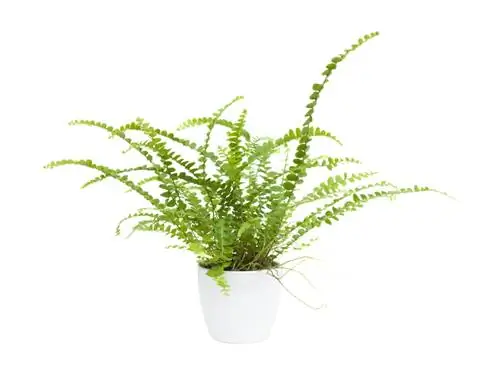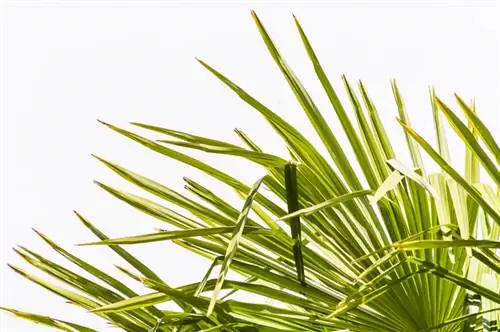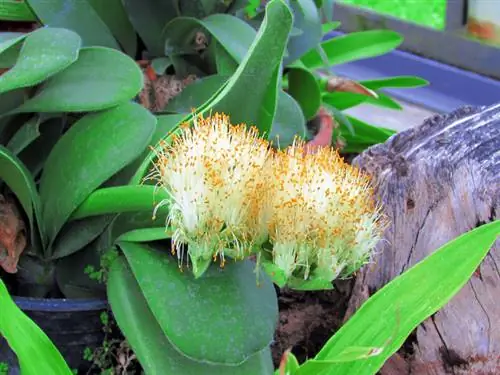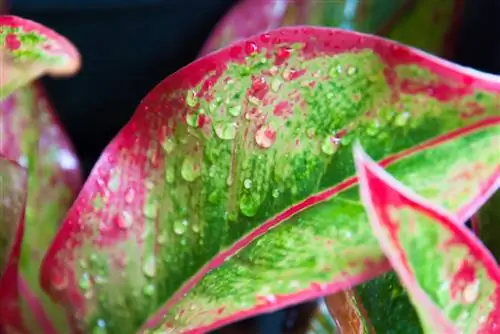- Author admin [email protected].
- Public 2023-12-16 16:46.
- Last modified 2025-01-23 11:20.
The best-known cobbler palm species is the Aspidistra elatior, which is cultivated in this country as a decorative green plant for indoor spaces. Its dark green, shiny, elongated leaves grow in large numbers directly from the rhizomes. The maintenance effort is very low.

How do I properly care for a cobbler palm?
To care for the cobbler palm, you should water regularly so that the soil does not dry out, repot the plant in spring if necessary, remove dried leaves, fertilize every four weeks if necessary and ensure room temperatures in winter. In summer it can be kept outside in a partially shaded location.
The cobbler's palm is also called shield flower or butcher's palm. Their origin lies in East Asia. The genus includes over 100 species, most of which are grown outdoors in frost-free areas. In Europe, Aspidistra elatior decorates homes, offices and shops as an evergreen ornamental plant. For successful indoor culture you should follow the following care instructions:
How often should cobbler palm be watered?
The cobbler palm is watered evenly and regularly so that there is no dried out soil or backwater in the pot. The top layer of the root ball should dry between waterings.
When can cobbler palm be repotted?
The cobbler palm should only be repotted if the rhizomes grow over the edge of the pot. A good time for repotting is spring. A commercially available potting soil (€4.00 on Amazon) is suitable as a substrate for green plants.
Do cobbler palms need pruning?
Pruning is usually not necessary. Only completely dried leaves should be cut off close to the ground.
Are cobbler palms susceptible to pest infestation?
The following pests can occur:
- mealybugs
- Mealybugs
- Scale insects
- Spider mites (red spiders)
The infestation of mealybugs and mealybugs can be easily recognized by small, white balls on the dark surface of the leaves. The red spider, on the other hand, is not immediately noticeable. If the air in the room is too dry, it is therefore advisable to check the undersides of the leaves regularly.
What diseases can occur?
Leaf spot disease occasionally occurs in this Aspidistra species. However, the brown spots on the leaves can also be caused by excessive, permanent moisture.
When and how are cobbler palms fertilized?
During the growing season, you can fertilize lightly every four weeks. As a rule, however, an annual fertilizer application with the new leaf shoots in spring is sufficient. The freshly divided plants should not be fertilized.
Does the cobbler palm need special care in winter?
The cobbler palms can cope with normal room temperatures in heated rooms. A cool winter quarter is also suitable. Temperatures below 5°C are not tolerated.
Tip
The cobbler palm can spend the summer outside. It feels comfortable in a protected, semi-shady to shady location. It cannot tolerate direct sun.






